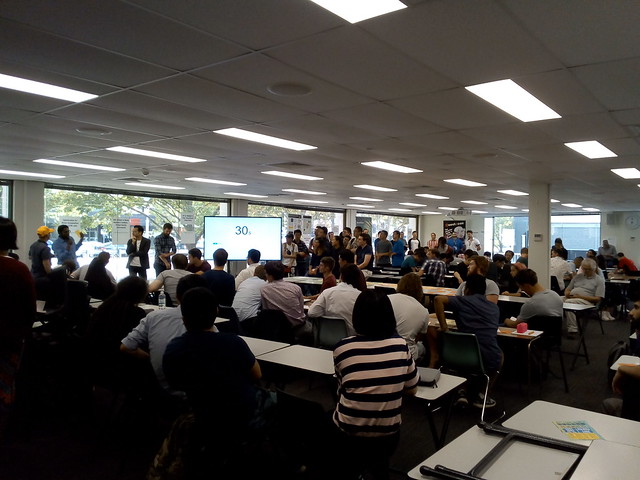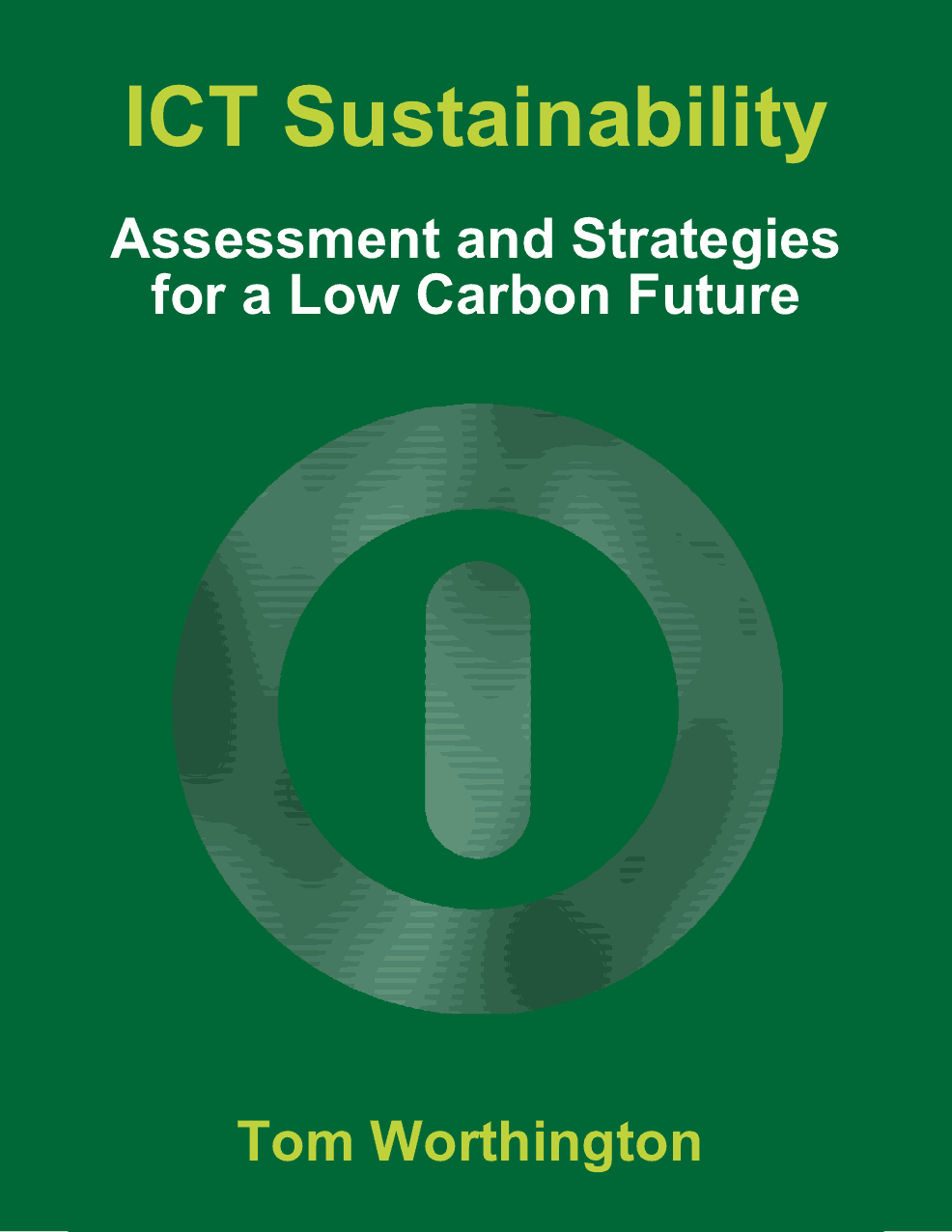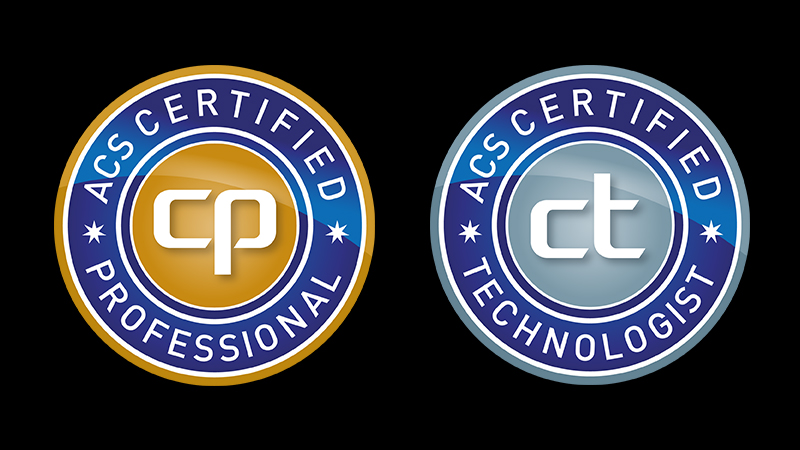Computer Professionals Providing Mobile Learning for the Digital
Economy
Description: Our digital economy depends on computer
professionals to build and maintain secure, reliable systems. Those professionals
need initial training and life long learning to maintain their skills. Training
computer professionals is a role for specialists with skills in both computing and
teaching. Education has been identified as a field of specialism by the Australian
Computer Society for computer professionals. We can use mobile learning to
accelerate the training of computer professionals in the area of education and they
can then use mobile learning for their students. Specialist computer educators can
also provide their expertise in on-line education to other disciplines. To measure
the success at training and delivering mobile education, we can monitor two key
performance indicators: What proportion of your computer educators are dual
qualified in computing and education? What proportion of your courses are offered
on-line via mobile devices?
- IT Professionals Change Everything
- Drive the Digital Economy Through Education
- Changes Needed in Education
- Key Metrics
About the Speaker: Tom Worthington is an independent computer
professional, educational designer and an Honorary Senior Lecturer in the Research
School of Computer Science at the Australian National University.
A Certified Professional member of the Australian Computer Society, in 2015 Tom
received a national gold Digital Disruptors Award for "ICT Education" and in 2010
was Canberra ICT Educator of the Year. Tom previously worked on IT policy for the
Australian Government, and in 1999 he was elected a Fellow of the Australian
Computer Society for his contribution to the development of public Internet policy.
He is a Past President, Honorary Life Member, Certified Professional and a
Certified Computer Professional of the society as well as a voting member of the
Association for Computing Machinery and a member of the Institute of Electrical and
Electronics Engineers.
Tom has a Masters in Education (specializing in Distance Education) from
Athabasca University, a Graduate Certificate in Higher Education from the
Australian National University and a Certificate IV in Training and Assessment from
the Canberra Institute of Technology. He blogs as the HigherEducationWhisperer.com.
He blogs as the HigherEducationWhisperer.com.
While an Honorary Senior Lecturer in Computer Science at the Australian National
University, a member of the Blockchain Technical Committee and the Professional
Education Governance Committee of the Australian Computer Society, his views here
do not necessarily reflect those of either organization.
These are the notes for the
presentation using HTML Slidy. If viewing the
slides you can press "A" to
display these notes (and press "A" again to hide them). To advance to the next
slide, press "page down", or click the left mouse button.
Two of the UN Sustainable Development Goals are to Ensure inclusive and
equitable quality education and promote lifelong learning opportunities for
all (Goal 4 and
Build resilient infrastructure, promote inclusive and sustainable
industrialization and foster innovation (Goal 9). These can be aided
by computer professionals using their technical skills to help provide
education.
See:
UN General Assembly resolution 70/17, Transforming our world: the 2030 Agenda
for Sustainable Development, A /RES/70/1 (21 October 2015). Retrieved from
https://documents-dds-ny.un.org/doc/UNDOC/GEN/N15/291/89/PDF/N1529189.pdf
China's Belt and Road Education Plan
Part of the Belt and Road Initiative
Chinese universities & joint ventures:
- Two-Way Student Exchange
- Co-Operation in Running Educational Institutions
- Teacher Training
- Joint Education and Training
Add m-learning?
China's Belt and Road Education Plan envisages students from the Indo-Pacific
region studying at campuses in China and also on regional joint venture campuses.
However, the plan appears to cover only on-campus face-to-face education. This
provides the opportunity to enhance the plan by offering online learning using
mobile devices. The techniques to provide such education are proven. A limiting
factor is teaching staff who are competent in both the subject area, in education
and in the delivery technology. Computer professionals already have the subject
matter knowledge of computing and much of the knowledge needed for online delivery,
they just need some training in teaching.
See:
Australian Department of Education.
China's Belt and Road Initiative – Education, 2017. URL
https://internationaleducation.gov.au/International-
network/china/PolicyUpdates-China/Pages/Chinas-Belt-and-Road- Initiative-.aspx
China Ministry of Education. Education Action Plan for the
Belt and Road Initiative, 2016. URL
https://web.archive.org/web/20181013232708/https://eng.yidaiyilu.gov.cn/zchj/qwfb/30277.htm
IT Professionals Change Everything
IT developments depend on trained computer professionals to make them
happen:
Async-Sync Learning System being built at ANU.
Combine classroom and online education with free open source software:
- Live online quizzes in class, plus
- Students can watch the video and do the quizzes later
In a series of papers I proposed combining the features of both Asynchronous and
Synchronous education in the one package (Worthington, p. 619, 2013, Worthington
& Wu, 2015). An ANU student is now working on implementing a
Moodle module to allow a live recording to include quizzes.
References:
- Worthington, T. (2013, April). Synchronizing asynchronous learning-Combining
synchronous and asynchronous techniques. In Computer Science & Education
(ICCSE), 2013 8th International Conference on (pp. 618-621). IEEE. URL https://doi.org/10.1109/ICCSE.2013.6553983
- Worthington, T., & Wu, H. (2015, July). Time-shifted learning: Merging
synchronous and asynchronous techniques for e-learning. In Computer Science &
Education (ICCSE), 2015 10th International Conference on (pp. 434-437). IEEE. URL
https://doi.org/10.1109/ICCSE.2015.7250285
Drive the Digital Economy Through Education
Education is an under-recognized specialist area for computer professionals.
Example: Free open online ICT Sustainability
Courseware funded by ACS and used by ANU and Athabasca.
- Developed by computer professionals who are also professional educators
- Packaged for online delivery
The Australian Computer Society (ACS) funded the development of ICT Sustainability
Courseware now used by the Australian National University and Athabasca
University (Canada). The course-ware is designed for the Australian developed
Moodle Learning Management System for delivery to mobile devices. The course-ware
is free under a Creative Commons license.
Computer Professional Education Specialists
ACS recognizes
education as a specialism:
- Learning and development assessment
- Learning and development management
- Learning delivery
- Learning design and development
- Teaching and subject formation
From Skills Framework
for the Information Age (SFIA)
Computer professionals are accredited under the International Professional Practice Partnership (IP3).
The Australian IP3 member is the Australian Computer Society (ACS), who certify
professionals specialist area. ACS use the Skills Framework for the
Information Age (SFIA) to identify skills, five of which relate to
education and training development, assessment, management, delivery and
subject formation.
This would enable computer professionals working in higher education to be
certified in education relevant to their discipline. This could be of value to
improve the quality of education across the Indo-Pacific.
Provide: eBooks, discussion forums, tools for inquiry and
assessment.
Pictographs by Carlos
Sarmento from the Noun Project (CC BY 3.0 US).
In studying education, I have read many theories and techniques for distance
education. Designing an online course is much the same as face-to-face. However,
there is not the time or resources to teach all of this to the tutors and lecturers
who do the teaching at universities. Something simpler and quicker to teach,
understand and implement is needed.
The cover of my book "Digital Teaching" is illustrated with the four pictographs
by Carlos Sarmento (from the Noun
Project CC BY 3.0 US). This summarizes an approach with four steps:
- Provide eBooks and other curated content on the topic;
- Facilitate discussion between the students;
- Teach tools and techniques for the student to explore the topic;
and
- Assess, including formative feedback, to help them learn.
The instructor can get away with making up a face-to-face course as they go along,
but an online course needs to be carefully designed and tested in advance.
Keep in mind that what students like is not necessarily the same as what helps
them learn, or what they will use. Offered the option of face-to-face lectures,
students will say they want them, but most will then not turn up. Students prefer
high-quality videos, but video quality makes no difference to learning.
Five years of online study made me appreciate the value of classroom teaching. The
typical university student still want to meet face-to-face with other students and an
instructor. However, this time should not be wasted on lectures, or tutorials, where
the student sits passively.
The Australian National University (ANU) found that after the first two weeks only
30% of students attend a typical lecture. In a semester, that works out to less
than 50% attendance.
ANU demolished the central Manning Clark Centre lecture theaters in late 2017, to
be replaced by "a
number of multi-purpose, multimodal, flexible learning spaces which will be embedded
with new digital infrastructure".
No preferred learning approach has been set centrally by ANU. However, I suggest
replacing lectures with a flipped classroom, will provide a better learning
experience while
halving the teaching space required. A typical "on-campus" student can be
expected to be in "class" for no more than 10% of their study time. For a full-time
student studying 40 hours a week, this would be 4 hours. A full-time student might
spend as little as one day per week on campus, a part-time student, one day a
month.
Improving Engagement of Online Students
Online students are less: engaged, likely to complete and
satisfied,
Need to design engagement with university & other students into the
assessed curriculum.
This engagement will also help notionally "on-campus" students.
Online students are more focused on individual courses and assessment tasks. This
is due to their being physically remote from the university. The student does not
perceive the "university" as more than an administrative entity. Also, online
students are more likely to be older, part-time and undertaking studies for work
purposes. As a result, these students are focused on completing the assessment. The
result is isolated, unhappy students.
The solution is activities to introduce the students to the online services the
university provides and getting the students to help each other. These have to be
compulsory, formal, assessed, for-credit activities. It is not enough to have
optional extra-curricular activities, as the task-driven online student will not do
these. It is also not enough to have one introductory activity, as the student will
revert to their previous isolated behavior.
Educational designers who know how to produce such activities for students. The
challenge is to convince discipline specific academics to make room in degree
programs for these "soft skills".
While the problem with engagement has been seen with distance education students,
the use of blended learning on-campus will see the increase in the same problem. The
same techniques can be used to help engage these students.
With this approach, the soft-skill activities wrap around the classroom time, much
as the new glass and steel of the Irving K Barber
Learning Centre, wraps around an old stone building at the University of British
Colombia.
M-learning Made Easy With Responsive Web Design
Responsive web design is now incorporated into learning software, such as
Moodle
Interface adjusts for desktop or mobile screen automatically
The designer still has to curate suitable content.
Desktop software used for e-learning, such as the Australian Moodle free open
source learning management system, has been upgraded to operate on mobile devices,
including smart phones. Two interfaces are provided: an App for mobile devices and a
responsive web design. The responsive design automatically adjusts the interface when
displayed on a mobile device (see video "Demonstrating Responsive Web Design"). The
responsive web design can also be used on a large screen for a conventional lecture,
or in a flexible classroom.
This still requires the educational designer to consider the context of where the
learner is. The mobile interface is useful for presenting small amounts of
information and asking for a short response. However, the student is unlikely to be
able to write a 4,000 word essay, while sitting on a bus. Even so it removes the need
to produce two, or three versions of course materials.
See also:
Micro-credentials
New Zealand micro-credentials are 1 to 8 weeks study
3 x 1 week teaching micro-credentials for IT professionals?
- Delivery
- Assessment
- Design
M-learning can be over shorter periods and targeted at specific skills. The New
Zealand government is recognizing micro-credentials from tertiary education
organizations as of 22 August 2018. The NZ credentials can be the equivalent of 1 to
8 weeks study. The shortest qualification typically issued by Australian universities
is a 12 week graduate certificate.
As an example, one approach would be to design a teaching qualification for
computer professionals consisting of the equivalent of 3 weeks study. This could be
made up of
3 one week micro-credentials, the equivalent of a one semester, one quarter full
time load, graduate certificate course. Students could undertake the three
micro-credentials separately, or as part of a graduate certificate, graduate diploma,
or masters degree.
See:
New Zealand Qualifications Authority,
Recognising micro-credentials in New Zealand. URL
https://www.nzqa.govt.nz/about-us/consultations-and-
reviews/recognising-micro-credentials/
Training
Tech Professionals to Teach: Parts 1 to 10
Life long learning and micro-credentials will result in worker having several
hundred qualifications. This would be unmanageable with paper certificates and even
with web based e-certificates, such as those issued by "My eQuals" in Australia (the
image shows my Graduate Certificate in Higher Education, issued by ANU). Employers
will want to be able to automatically check qualifications against job requirements.
One technology which may be used is block-chain. There is an ACS Blockchain
technical committee looking at this, as one use for the technology.
See:
Higher Ed Services, Welcome to
My eQuals. URL https://www.myequals.edu.au/participants/
A. Grech, & A. F. Camilleri,
Blockchain in education, 2017. URL
https://www.pedocs.de/volltexte/2018/15013/pdf/Grech_Camilleri_2017
_Blockchain_in_Education.pdf#page=68
Summary: Changes Needed in Education

ANU Techlauncher in Flat Floor Classroom
- Qualify computer professionals as education specialists at higher education
institutions.
- Accelerate their training, using mobile learning.
- Have these professionals design and deliver mobile learning.
- Teach these techniques to educators in other disciplines and other education
systems.
Key Metrics
- What proportion of your computer educators are dual qualified in computing and
education?
- What proportion of your computer education courses are offered on-line via
mobile devices?

















